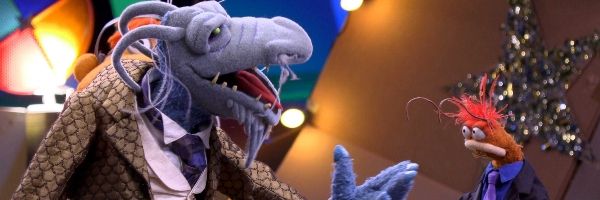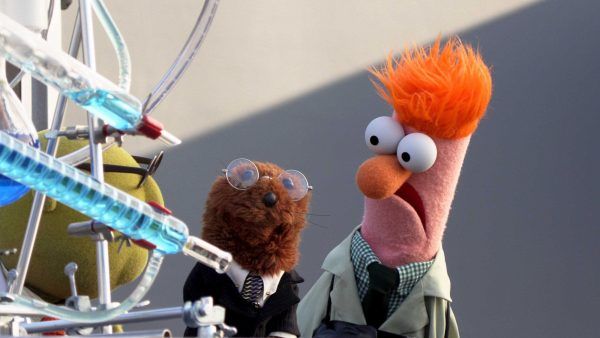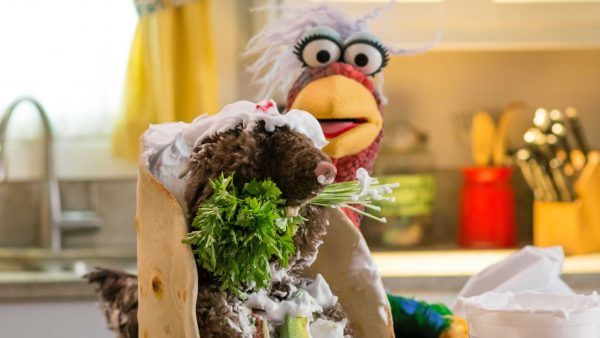After The Muppet Show, which ended its run in 1981 after 5 seasons, 150 episodes and countless guest stars, Jim Henson’s gaggle of charming characters (and the ceaselessly talented puppeteers behind them) made their way to movie theaters, animation, theme parks, the internet, and (several times) back to television, always experimenting but always trying to recapture the essential magic that made the original Muppet Show such a phenomenon (as evidenced by the amount of vaudevillian, “let’s put on a show” plotlines many of these projects centered around). But in recent years, it has been even harder for the Muppets to find a cultural foothold; once a lusted-after corporate commodity, they have been passed around the Disney Company, with each division trying to muster success. There were YouTube music videos, a pair of lackluster movies, a heavily hyped Office-style prime time television show, and a computer-animated revival of Muppet Babies, but nothing that really captured the essential, anarchic nature of the characters themselves. Until now.
Muppets Now, set to debut on Disney+ later this week, is a brilliantly madcap return to form for the characters Henson created, and a clear reminder of how essential they could be to the larger Disney enterprise.
Originally, Muppets Now was going to be a series of shorts, and various characters have installments of their own, personalized unscripted shows. But at some point, the decision was made to package several of the shorts into individual episodes, with wrap-around and connective tissue, as Scooter frantically uploading the new episodes, clearly filmed at home during the pandemic. (Not that it matters; these interstitial moments are adorable and embellished with very charming, almost arts-and-crafts style animation and graphics.) Each episode isn’t devoted to a single one of character’s shows; each one is a mix-and-match grab bag of installments, lending an element of unpredictability to each episode.
The Swedish Chef, for instance, has a cooking show where he faces off against celebrity chefs; Miss Piggy hosts a fashion blog that someone keeps misspelling as “Life Sty” (instead of “Life Style”); there’s a long-form interview segment called “Mup Close and Personal;” and Dr. Bunsen Honeydew and Beaker lead a MythBusters-style program called “Muppet Labs Field Test.” Oh, and Pepe the King Prawn serves as the emcee for a low-budget game show.
Each one of these segments comes fully formed with a wacky Muppet twist — the Swedish Chef is oddly antagonistic and his recipes are always a disaster; Miss Piggy is constantly interacting (for some reason) with Taye Diggs and Linda Cardillini, while getting negged by her bitchy assistant Uncle Deadly; the celebrity interviews are either interrupted or descend into weirdness; the science show inevitably ends with large-scale destruction, like the different components of a pizza getting catapulted against a wall; and Pepe seems to make up the rules for his game show as he goes along. Each segment has its own tempo and mood, but it’s rooted in the chaotic tone that always defined the best Muppet TV shows or movies; a sensation that anything could (and probably would) go wrong and that the whole thing is being held together with Scotch tape and a carefully worded prayer.
And part of what makes Muppets Now such an unalloyed blast is that the Muppet performers, many of whom have been doing this for decades (and a few, like Dave Goelz, having shared the stage with Jim himself), have had to conform to certain trappings since Jim died. They’re characters in Treasure Island! They are being followed around by documentary cameras! They’re in a movie with Jason Segel because Jason Segel was hot at the time and wanted to make a Muppet movie! For a while, their sense of ownership of the characters and their autonomy as artists had largely taken a back seat to corporate priorities and an ever-changing sense of where they fit in the larger organization. With Muppets Now, the segments are largely improvised and, more importantly, it feels that way. Things are loose and calamitous. Miss Piggy shouting “You’re alive!” at Aubrey Plaza doesn’t sound or look scripted. It’s just something Miss Piggy would say. And honestly, it’s been a long time since the Muppets themselves have felt this alive.
It should be noted, too, that Muppets Now has a slyly subversive streak that is very much appreciated. The Muppets have always been pigeonholed as children’s programming, but some of the earliest material Jim Henson and his merry brand of puppeteers ever did was in darkly humorous sketches for Saturday Night Live, and the original Muppet Show was as much a hit for adults as it was for children, often tackling difficult subject matter (just watch the Harry Belefonte episode) or containing wry, adult-skewering jokes.
Muppets Now, thankfully, continues that tradition: In the premiere episode, RuPaul is interviewed during “Mup Close and Personal,” and gets attacked by Howard (performed by Muppet MVP Bill Barretta), a pig character introduced in Muppets Tonight, who is very clearly gay. Having a gay performer mingle with a gay Muppet and referencing “queens” and RuPaul’s Drag Race’s signature catchphrase, seems bold, risqué, and empowering. Uncle Deadly (performed by Matt Vogel, who is also now Kermit and who played my favorite new Muppet character in recent memory, Kermit’s evil doppelgänger Constantine in Muppets Most Wanted), Piggy’s erstwhile sidekick, is also clearly gay. At one point in one of the first four episodes (the only ones screened for critics) he even happily gets into drag. Yes, Muppet queens.
Muppets Now was produced by Soapbox Films, a unit that is responsible for the most successful Muppet-related content in recent memory — the string of rapturously received Hollywood Bowl live shows and those YouTube sing-alongs that racked up millions of views. They clearly know what makes the Muppets special and they also know the best way to deliver that specialness to modern audiences, who are constantly distracted by their cell phones and whatever else is on YouTube. These segments, if they had launched on some other platform, would be inherently sharable, like the SNL digital shorts. But there’s something really charming about the way they are smooshed together, and the comedic mileage the performers get out of the interstitial material, whether it’s a sleepless Scooter trying to get the latest episode up or Fozzie endlessly pitching potential segment ideas. It’s of a piece. By modernizing the characters, and the way that they get their jokes across, Disney has stumbled upon something charmingly old school. There might not be a stage or as many celebrity guests, but this could very well be the most lovable, uproariously funny the Muppets have been since the original Muppet Show. Light the lights. The Muppets are back.
Grade: A
Muppets Now premieres Friday, July 31 on Disney+.



